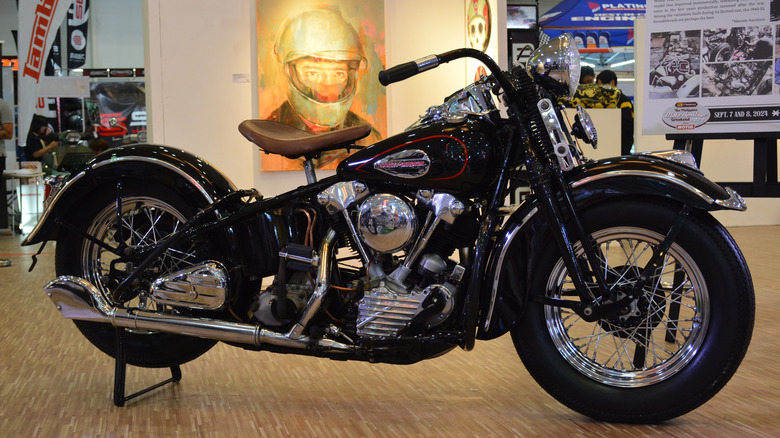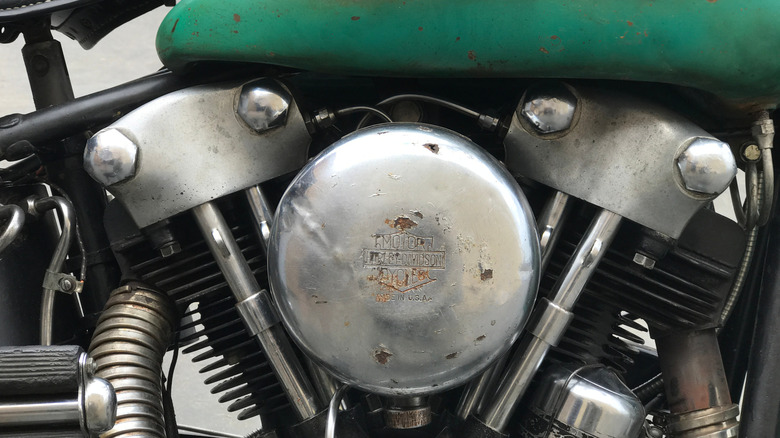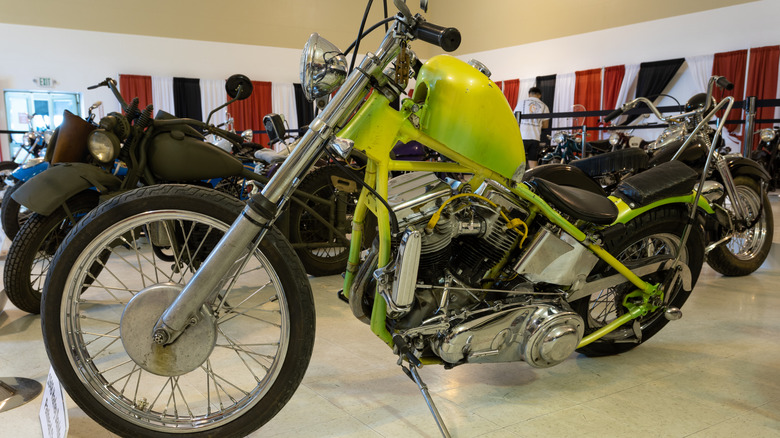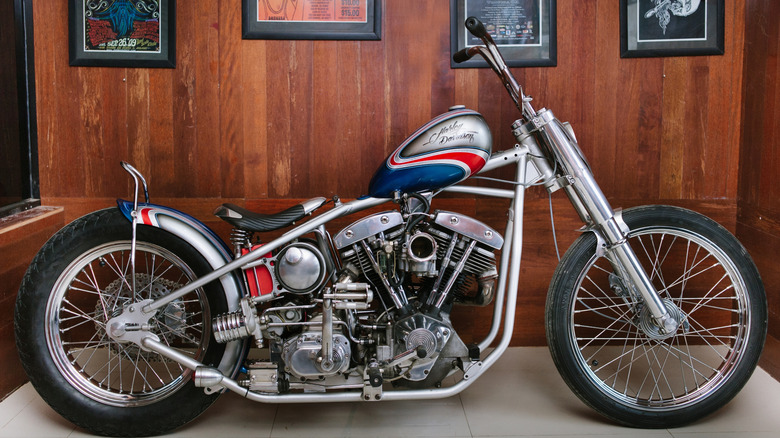Panhead Vs. Knucklehead Vs. Shovelhead: Harley-Davidson Engines, Compared
When talking about timeless Americana, it is difficult not to mention Harley-Davidson, the motorcycle manufacturer that has had the American streets in a tight grip for more than a century. In the many decades it has been around, the company has had a hand in setting some of the best trends in the motorcycle world, like building comfortable cruisers in the name of the Softail and fostering motorcycle clubs like the Hell's Angels. However, among some of its more interesting achievements is building some of the most talked about engines over the years, three of which are the Panhead, Knucklehead, and Shovelhead. Compared, these engines all share the awesome Harley name. However, that's where the similarities end, as they each have distinct characteristics and design features, such as different valve cover styles (which is where they actually get their names) and horsepower.
Harley-Davidson officially began in 1903 with the Model 1, which used a 24.74 cubic-inch inlet-over-exhaust single-cylinder engine. Down the line, the company engineered the Panhead, Knucklehead, and Shovelhead, each of which would have ample time to shine before being retired. Interestingly, each engine succeeded the other, starting with the Knucklehead, then the Panhead, and finally, the Shovelhead. Let's examine each of these to understand what they brought to the table, how they compared to each other, and why Harley saw fit to ultimately shelve them.
The Knucklehead was Harley-Davidson's first overhead-valve V-twin engine
It only took Harley-Davidson 33 years to come up with its first overhead-valve V-twin engine, which it nicknamed the Knucklehead, thanks to the engine's distinctive rocker covers that looked somewhat like knuckles. Before this engine, Harley had been making side-valve engines (Flatheads), which, although cheaper to make and maintain, were less powerful than what European motorcycles were sporting at the time. The Knucklehead came in 1931 — a 60.3 cubic inch pushrods-and-rockers overhead valve (OHV) engine that used a 4-speed constant-mesh transmission and a pumped, recirculating oil system.
Several Knucklehead models were released in different years, each with its own unique horsepower and engine dimensions. For example, the 1936 E-model Knucklehead, which pushed out 37 horsepower, had problems with its valve springs, which broke quickly. The engine also had issues with severe oil leakage and poorly lubricated rockers. As such, Harley saw it necessary to improve the Knucklehead. It did so as the years passed, eager to weed out all these issues. The engine's revision bore some fruit. However, that wouldn't be enough to stop the company from starting work on its successor.
The Panhead is shaped like a pan
Harley-Davidson's next entry, and the Knucklehead's successor, was born out of necessity. WW2 had just ended, and back home, America was quickly transforming its remote corners to be more accessible to the ordinary citizen. This transformation came in the form of improved transport infrastructure, such as tarmac roads, which made the country easier to traverse. Motorcycles with more powerful engines became popular, and as a company that had supplied bikes for the populace earlier before helping out in the war effort, Harley quickly stepped up to meet whatever demands were about to sprout.
In 1947, the company announced the Panhead, an engine that wouldn't have overheating issues thanks to using aluminum in its cylinder heads instead of cast iron. Since aluminum conducts heat much better, the engine could shoulder more heat-related burden usually associated with high-power operation. The Panhead came with a revised oil pump, with its valves seated on shrunk-in hard seat rings. Harley used one-piece polished valve covers for the engine, which earned it its nickname: the Panhead.
Like the Knucklehead, the Panhead's horsepower and engine specifics were tied to different models. Earlier versions of the Panhead registered a horsepower range of 50 to 55, while the ones in the 1960s, which saw significant changes, pushed out 60 horsepower. Like its predecessor, the Panhead had its share of issues, including the aluminum cylinder heads that had been so revolutionary at its inception. The heads expanded quicker than the Knucklehead's cast-iron ones, increasing the risk of more valve lash, which resulted in poor engine performance. Although Harley fixed this issue with hydraulic lifters, it would only be a matter of time before it moved on to its next iconic engine.
The Shovelhead was a revival of the big twin engine
The Shovelhead debuted in 1966, an OVH big twin engine that would power bikes rivaling some of the rarest Harley-Davidson motorcycles ever made. The engine surged into existence due to an emergent demand for motors that could power the more powerful and heavier motorcycles of the day. You can already guess how the Shovelhead got its name, and yes, it has everything to do with the shape of its rocker covers. Like the Panhead, the Shovelhead used aluminum cylinder heads in its build, although these versions were sturdier than the ones used in the initial Panhead engines. Additionally, Harley ended up with two versions of the Shovelhead, a 74-cubic-inch and an 80-cubic-inch, both of which had the iconic upturned coal shovel-like rocker boxes.
As with the Knucklehead and the Panhead, the Shovelhead's horsepower varied from model to model. For example, early iterations of the 80-cubic-inch model had a horsepower of 66 at 5,600 revolutions per minute. While the Shovelhead seemed geared toward better performance and reliability across the board, it suffered from heat issues, just as the Panhead had. Additionally, it had problems with blown head gaskets and faulty electronic ignition, among other issues, all of which would result in its replacement by the Evolution engine.
The Knucklehead, Panhead, and Shovelhead are some of the most iconic Harley-Davidson engines. Each had a distinct style that not only set it apart from the others but also distinguished it from what was available on the market at the time. Each was an ambitious engineering endeavor that has directly or indirectly shaped how Harley-Davidson engines perform today.



